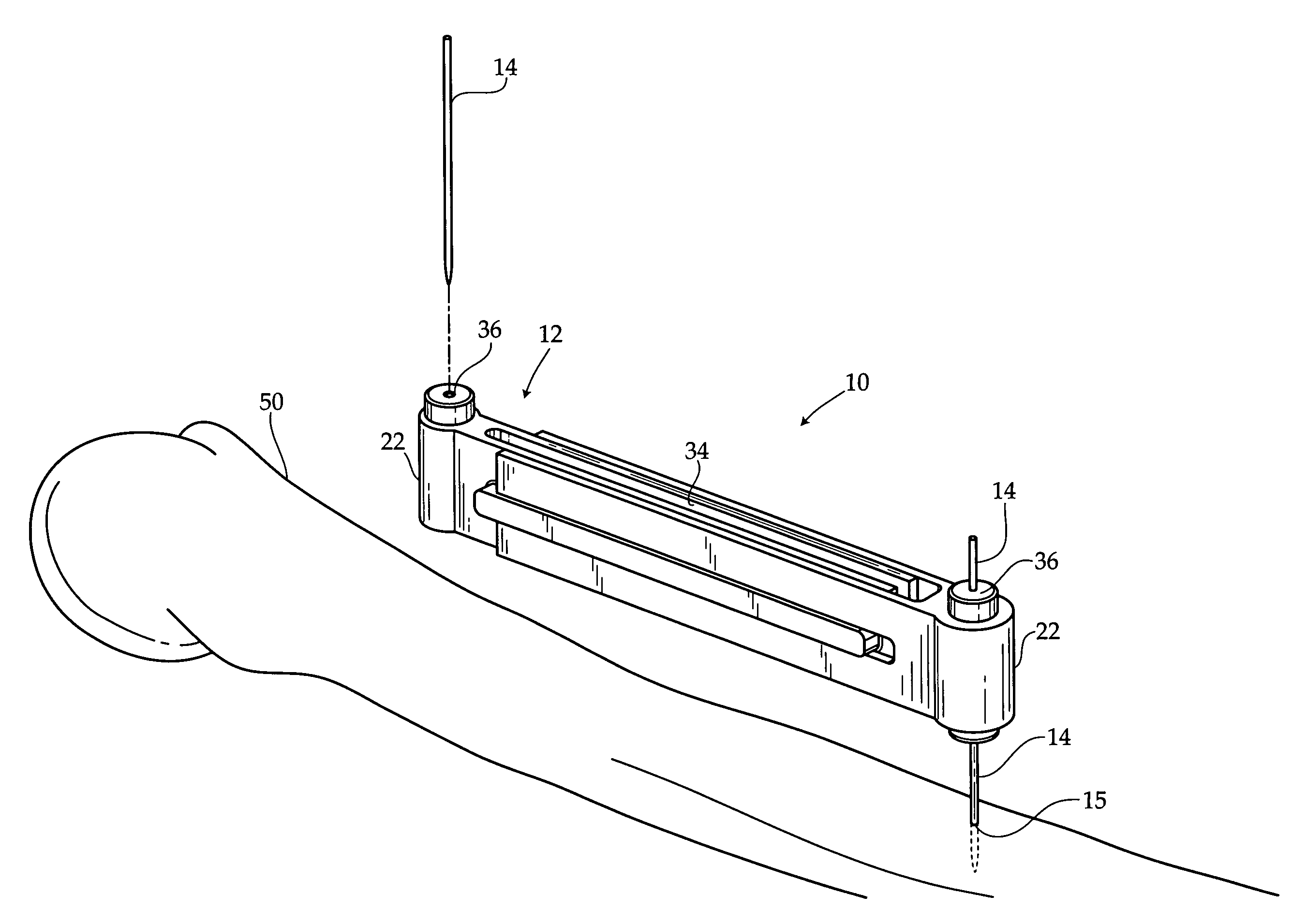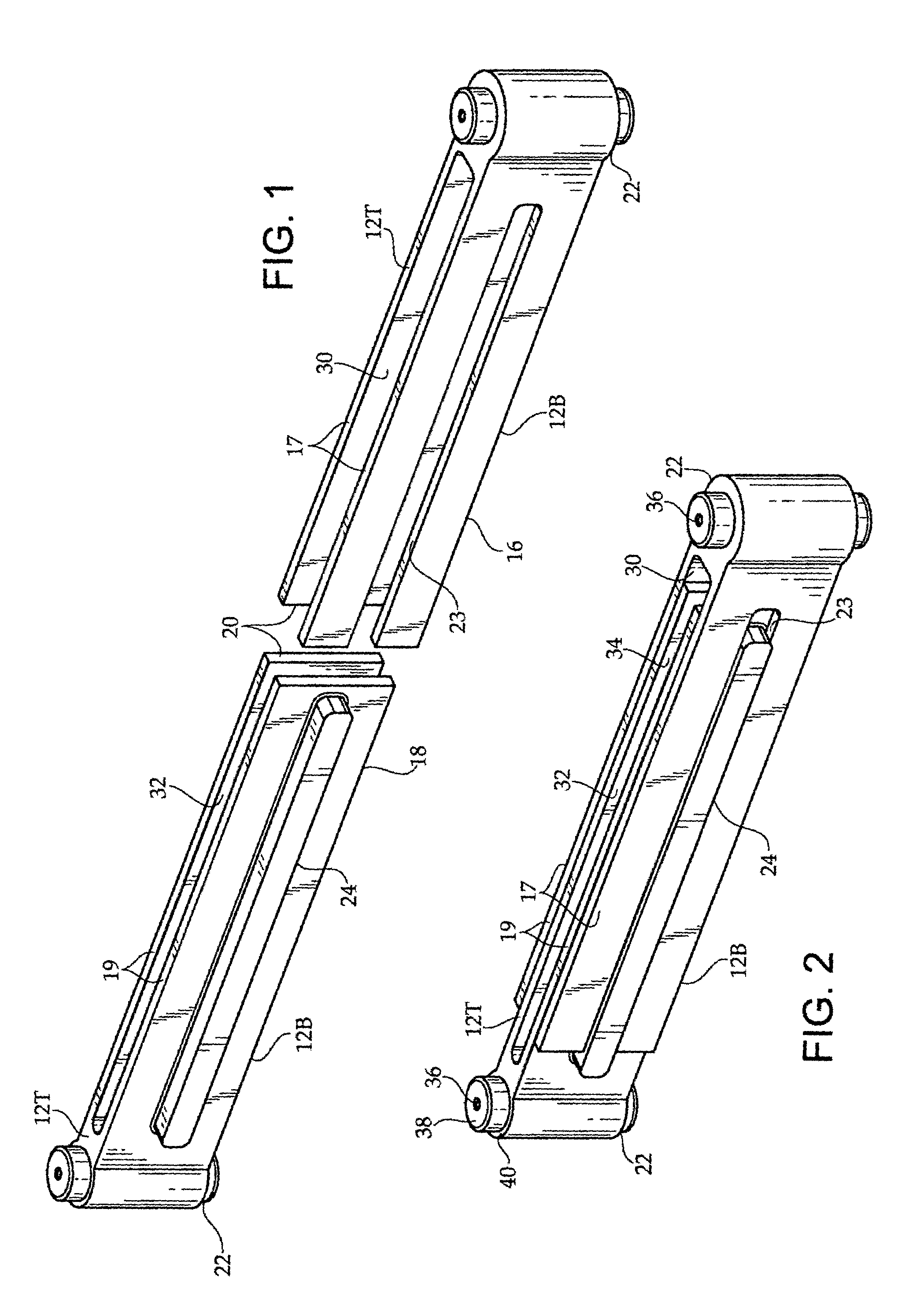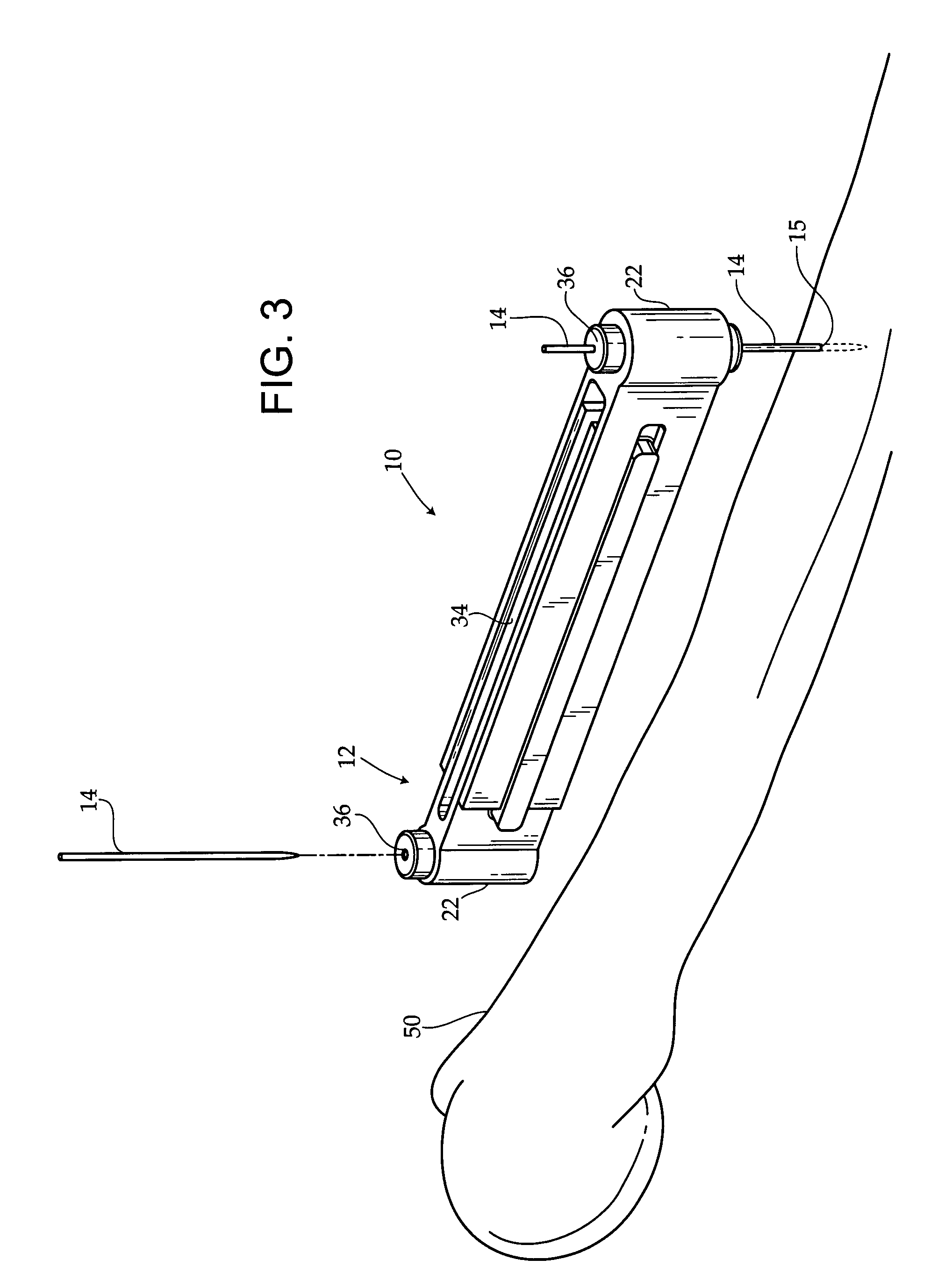Adjustable osteotomy guide
a technology of osteotomy guide and adjustable angle, which is applied in the field of adjustable angle osteotomy guide, can solve the problems of difficult for surgeons to maintain a precise angle relationship between several cuts, unnecessary trauma to surrounding tissue, and inability to accurately align several cuts
- Summary
- Abstract
- Description
- Claims
- Application Information
AI Technical Summary
Benefits of technology
Problems solved by technology
Method used
Image
Examples
Embodiment Construction
[0022]FIG. 3 illustrates an osteotomy guide 10 having a frame 12, and a pair of guide pins 14. Referring to FIG. 1 and FIG. 2, the frame 12 has a pair of frame sections—namely an outer frame section 16 and an inner frame section 18. The frame sections 16, 18 each have an open end 20 and a guide pin sleeve 22 at an opposite end therefrom.
[0023]The inner frame section 18 has a pair of inner vertical panels 19, which are substantially parallel to each other and extend from the guide pin sleeve 22 to the open end 20 of the inner frame section 18. The inner frame panels 19 define an elongated inner slot 32 therebetween. The outer frame section 16 has a pair of outer vertical panels 17, which are substantially parallel to each other and extend from the guide pin sleeve 22 to the open end 20 of the outer frame section 16. The outer frame panels 17 define an elongated outer slot 30 therebetween.
[0024]The inner frame section 18 is sized to fit and telescopically slide within the outer frame ...
PUM
 Login to View More
Login to View More Abstract
Description
Claims
Application Information
 Login to View More
Login to View More - R&D
- Intellectual Property
- Life Sciences
- Materials
- Tech Scout
- Unparalleled Data Quality
- Higher Quality Content
- 60% Fewer Hallucinations
Browse by: Latest US Patents, China's latest patents, Technical Efficacy Thesaurus, Application Domain, Technology Topic, Popular Technical Reports.
© 2025 PatSnap. All rights reserved.Legal|Privacy policy|Modern Slavery Act Transparency Statement|Sitemap|About US| Contact US: help@patsnap.com



